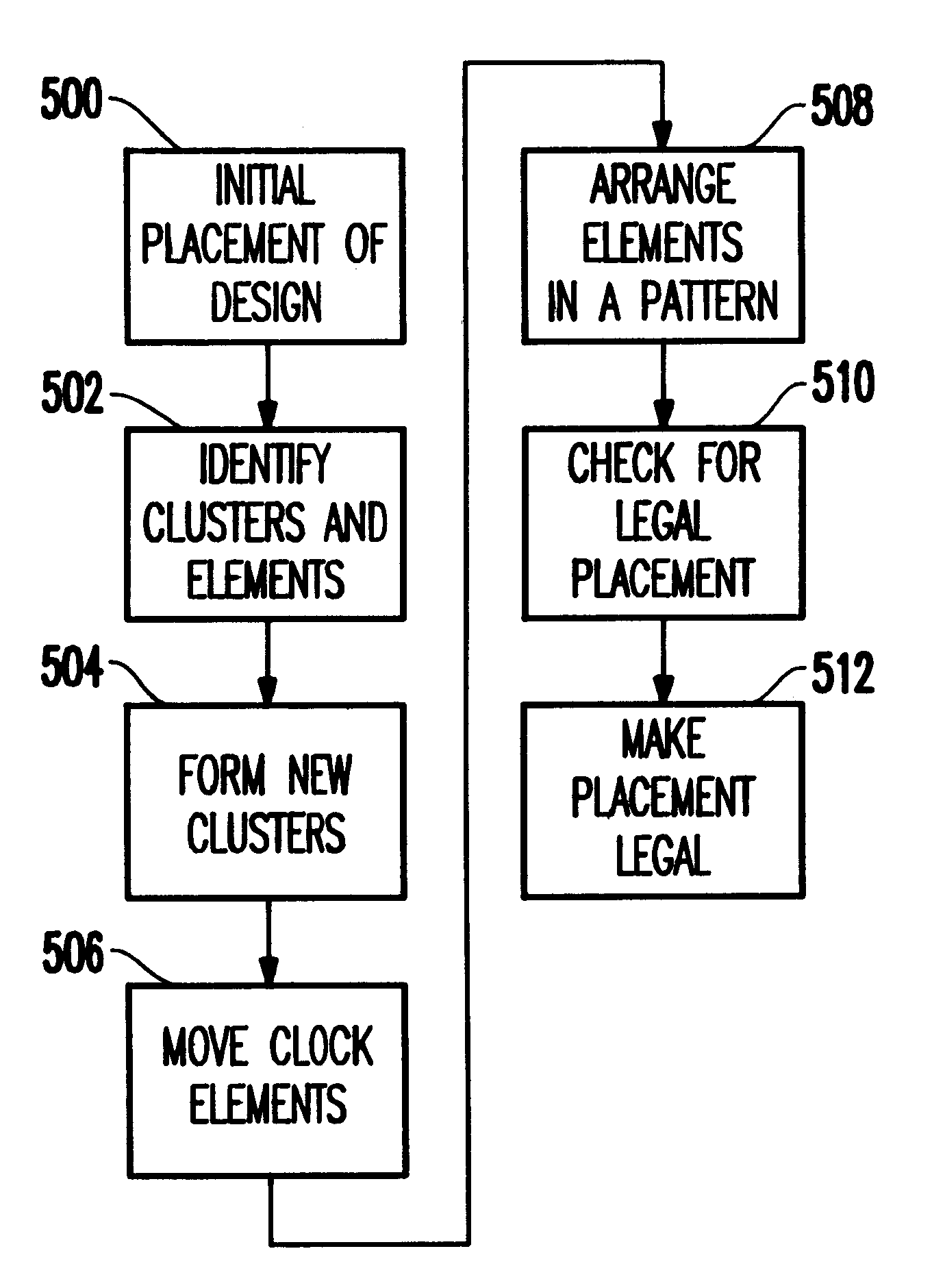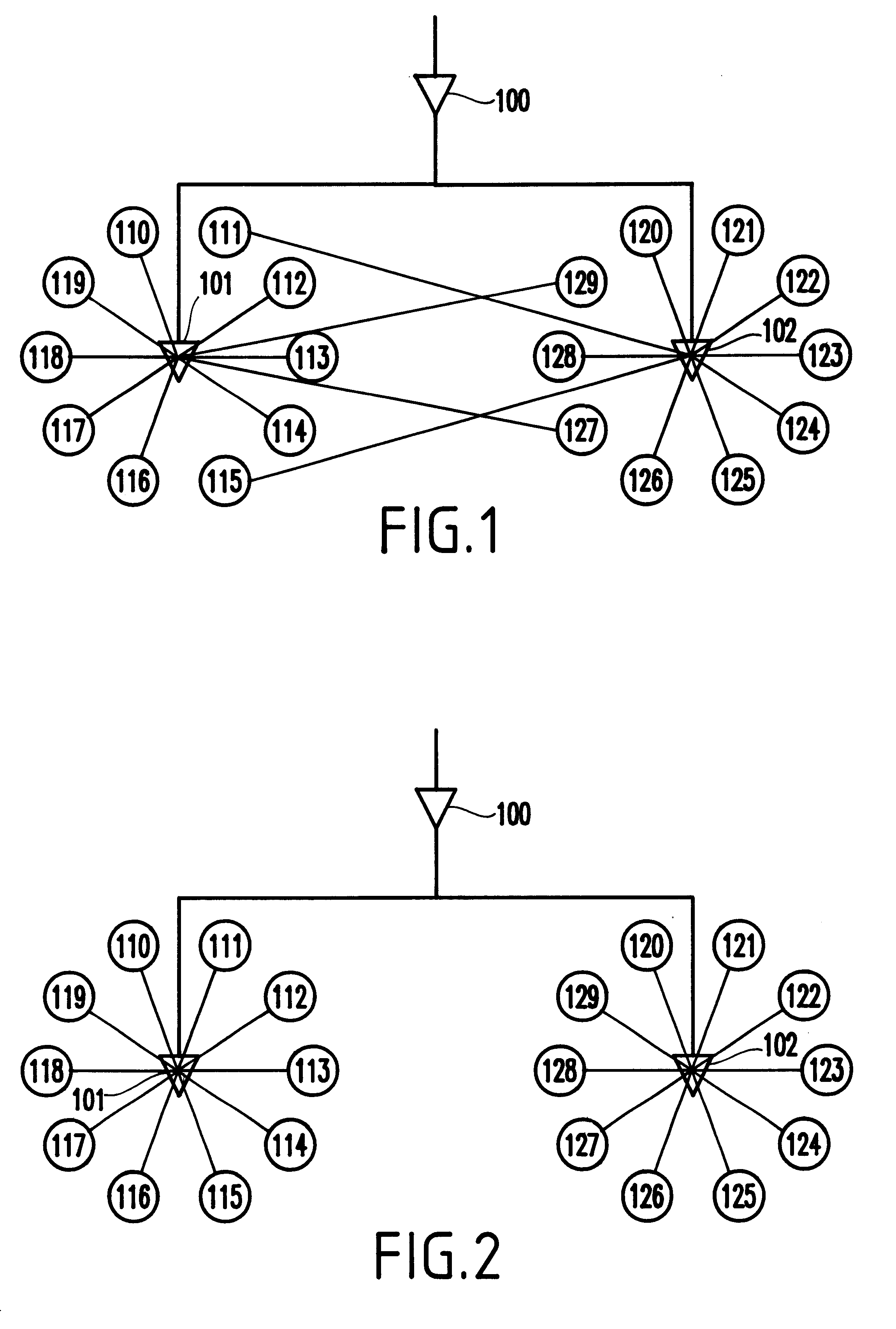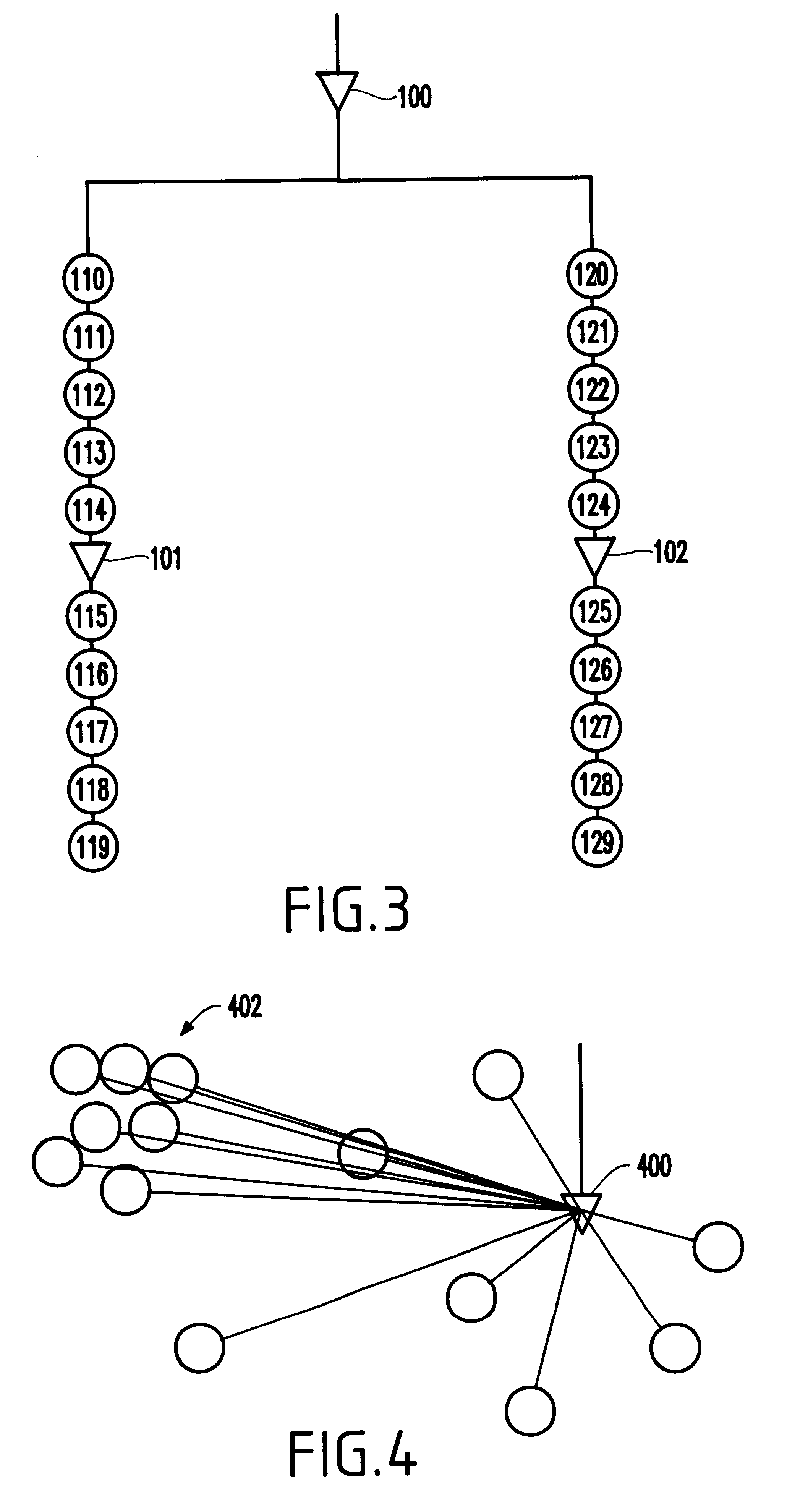Latch clustering for power optimization
a technology of power optimization and latch clustering, applied in the field of latch clustering for power optimization, can solve the problem that clocks consume a large portion of the power of integrated circuit chips
- Summary
- Abstract
- Description
- Claims
- Application Information
AI Technical Summary
Problems solved by technology
Method used
Image
Examples
Embodiment Construction
As mentioned above, dynamic power consumption of a net equals one-half the net capacitance multiplied by the voltage squared and the net switching frequency, or (1 / 2C)V.sup.2 F. Reducing the clock net wiring will reduce capacitance and, therefore, reduce chip power consumption. The objective of clustering latches together for power reduction has to be balanced with the perturbation caused by moving latches toward a central location. From a clock perspective, the clock wire lengths and capacitance will be minimized if all latches are clustered together into a "row" or "column". However, depending on the cluster size, this methodology may move the latches very far away from where they would naturally reside per the logic that they serve.
As the foregoing suggests, dynamic power consumption and crossover power loss are both proportional to the switching frequency. Clock drivers and latches switch more frequently than other devices. Indeed, the clock devices switch twice every clock cycl...
PUM
 Login to View More
Login to View More Abstract
Description
Claims
Application Information
 Login to View More
Login to View More - R&D
- Intellectual Property
- Life Sciences
- Materials
- Tech Scout
- Unparalleled Data Quality
- Higher Quality Content
- 60% Fewer Hallucinations
Browse by: Latest US Patents, China's latest patents, Technical Efficacy Thesaurus, Application Domain, Technology Topic, Popular Technical Reports.
© 2025 PatSnap. All rights reserved.Legal|Privacy policy|Modern Slavery Act Transparency Statement|Sitemap|About US| Contact US: help@patsnap.com



